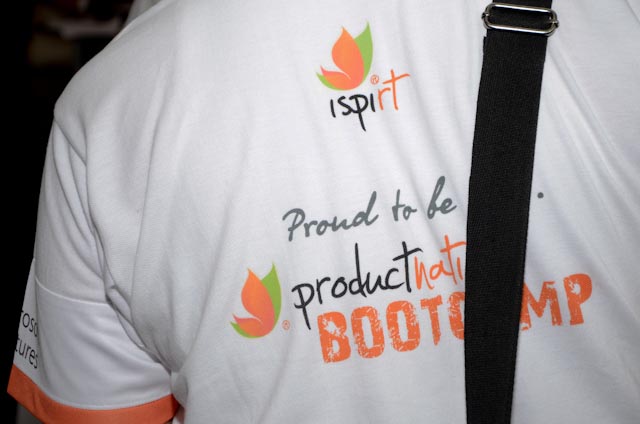As someone who has attended many events such as the Nasscom Product Conclave related to Software Products, I was intrigued by the concept of an one-day Boot Camp organized by iSPIRT (Indian Software Products Industry Round Table). i had earlier attended a mini-Round Table event organized by them in Chennai that was quite energizing to say the least and hence i signed up for the Camp that was to be held on 4th December at Pune.
Unlike the Conventions/Conclaves/Conferences where we pay and get to listen to industry stalwarts, the design of the PN camp was radically different. Interested professionals were first required to apply to Product Nation and if selected were asked to pay the Camp Participation fees. Selected participants were then divided into 4 groups called Cohorts and each cohort of about 12-15 members had 4 sessions with facilitators on various topics.
The cohort that i was in huddled together and worked as follows:
a. Session 1 with Rajeev Srivatsa of Urbanladder as the moderator on ‘Experiments never killed anybody’: Each of us shared our Vision, Target Segment and the Problem we sought to solve and got instant feedback from the others. This was an enjoyable session where we really got to know the space where the others were operating and could contribute from our experience. We also critically looked at the assumptions we were making at this stage and designed experiments to either validate or invalidate the same. We ran out of time but managed to sneak in a working lunch to do justice to the objectives of the session.
b. Session 2 was on “Picking your battles” and this was moderated by Shashank of Practo. Each participant talked about the reason why they started whatever they had started and examine if there was an emotional connect to it. The proceedings were enlivened by personal shares by Shashank, Kunal Shah of Freecharge and Avlesh Singh of WebEngage .
c. Post lunch session 3 was a presentation by Kunal Shah titled ‘Shameless is the new sexy”: I was personally inspired by Kunal’s perseverance, never taking no for an answer and his chutzpah. The discussion went tangential for a while when there were objections to some of his tactics on moral and ethical grounds. Overall an enjoyable session
d. Session 4 where participants belonging to cohorts 3 and 4 were in a session by Harshit Desai of Indigo on ‘Business Design’: I volunteered to represent my table of 6 and in the process was grilled by the others on various aspects of my personal and professional life as part of the session. Along with 5 others who represented their tables, I stood in front of the room and all of us were treated to opinions by our table-mates about what we were good at. This session was about careful profiling of the user so that the solution can deliver the appropriate results.
After these sessions, we were together treated to a presentation by Manav Garg of Eka Software on his journey. It was really refreshing to know about his early struggles and the ways he overcame them. this was followed by Q&A and a small quiz (I won a milestone replica for answering a question correctly) and it was all over.
For a first time, this was a great show and i want to congratulate everyone involved in it especially Avinash Raghava and his team of volunteers. I also met some people like Jay Pulur of Pramati, Sandeep Todi whom i have only spoken to or written to earlier. Thanks to the event, I have also gotten to know a few product startups like Levitum, Shimbi, Taxeeta,Teedback, Opsftware, extraaedge,happyvisitor, Effect works, Cordiant who are doing interesting work.
This would not be complete without expressing a few suggestions for an improved performance the next time around.
a. The cohort members can be a homogenous lot either in terms of their target segment focus like B2B or B2C or as a vertical if there are sufficient numbers. this would lead to more focussed discussions and questions and minimize dilution.
b. For a Camp like this, 4 sessions is perhaps too many. I would have liked to have 1 pre-lunch and another post lunch to be able to do justice to the discussions.
Overall, a different and a great experience!



